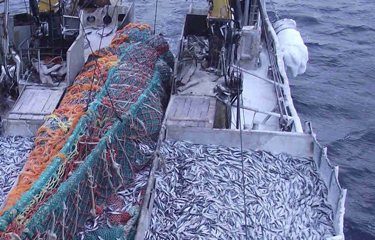Russian pollock exporters regain access to China, after estimated USD 400 million in losses

Russian pollock exporters have regained access to the Chinese market, which had been for the most part closed since late 2020 due to COVID-19 restrictions.
The Russian Federal Agency for Fisheries said in a press release that the Chinese ports of Dalian and Qingdao have lifted restrictions previously imposed on bulk seafood imported from Russia. In mid-January, the first Russian tramper to arrive in China since the lifting of the ban arrived in the port of Dalian and unloaded 7,000 metric tons (MT) of fish, which was successfully cleared through Chinese Customs.
The Chinese market became significantly harder for Russian seafood companies to access after Chinese customs authorities announced in January 2021 they had found strains of live COVID-19 on the packaging of seafood imported from Russia. In response, China increased the frequency and thoroughness of its inspections of imported Russian seafood, and quietly instituted a de facto ban on Russian trampers making port calls in China, allowing only imports delivered by reefer ships and reefer containers. The constriction became a pain point for Russian fisheries, especially during Russia’s pollock fishing season, as previously China accounted for 60 percent of the country’s pollock exports. A lack of reefer capacities, cold-storage facilities, and reefer containers in Russia’s Far East, where much of the country’s pollock catch is landed and harvested, complicated logistics. And while Russian fishing companies responded to the crisis by catching less fish, with a 6 percent reduction in the country’s catch to 1.67 million metric tons (MT), a pollock glut developed and placed a severe strain on the supply chain.
Despite an effort by the Russian government to encourage uptake in the domestic market and a push to open new markets, Russian pollock companies could not make up for the volumes previously shipped to China. They attempted to adapt by directing pollock shipments through the South Korean port of Busan, where it was reloaded and disinfected. But in May 2021, China stopped accepting Russia-issued health certificates for products transited through Busan, forcing companies to register it in South Korea as an imported product and then reregister it as an export, incurring additional costs. Despite recovering pollock prices, the endeavor was still loss-making, according to Alexei Buglak, the president of the Russian Pollock Catchers Association. The association, which represents Russian fishing companies accounting for 78 percent of Russia’s pollock catch, estimated the cost of China’s customs clampdown to the association’s members exceeded USD 400 million (EUR 355 million), with USD 260 million (EUR 228 million) of those losses coming in the first six months of 2021, during the peak of Russia’s pollock season. Russian pollock exports to China decreased by almost 60 percent year-on-year in 2021, according to the group.
With China instituting enhanced labeling requirements in 2022, including the placement of a label inside packages of frozen pollock, forcing Russian pollock companies to rejigger their processing methods, Buglak said exports to China could end completely this year. Russian and Chinese officials have had opened a dialogue on scaling back the new requirements, but thus far the Russian side has received no indication China will do so, according to Buglak.
“Unfortunately, for now, all the circumstances show that 2022 will be even more difficult in terms of product logistics,” he said in a Fishnews interview.
Buglak said Russia’s best remaining move is to enhance the country’s domestic fish-processing capacity. Pointing out that Russian fish consumption is higher per capita than the United States or the European Union, he said there is already acceptance of fish products in the Russian market and further room for growth. Better distribution could reduce prices, making pollock more affordable, he said, but the real key will be the manufacture of high-value-added seafood products.
“The only way to change the situation is by developing better finished products. Pollock is an excellent raw material for the production of various semi-finished products – this is a big market. It is necessary to expand the product range, create new types of products, increase the output of consumer products,” Buglak said.
Due to combined industry efforts and government incentives, the production of pollock fillet, surimi, and mince increased by 50 percent in 2021, to 150,00 MT, Buglak said.
“And the trend is set to continue,” he said.
The development of a better and more-diverse set of finished products will make the products made by Russian pollock industry more attractive to both the domestic and international markets, Buglak said.
Photo courtesy of Russian Pollock Catchers Association






Share